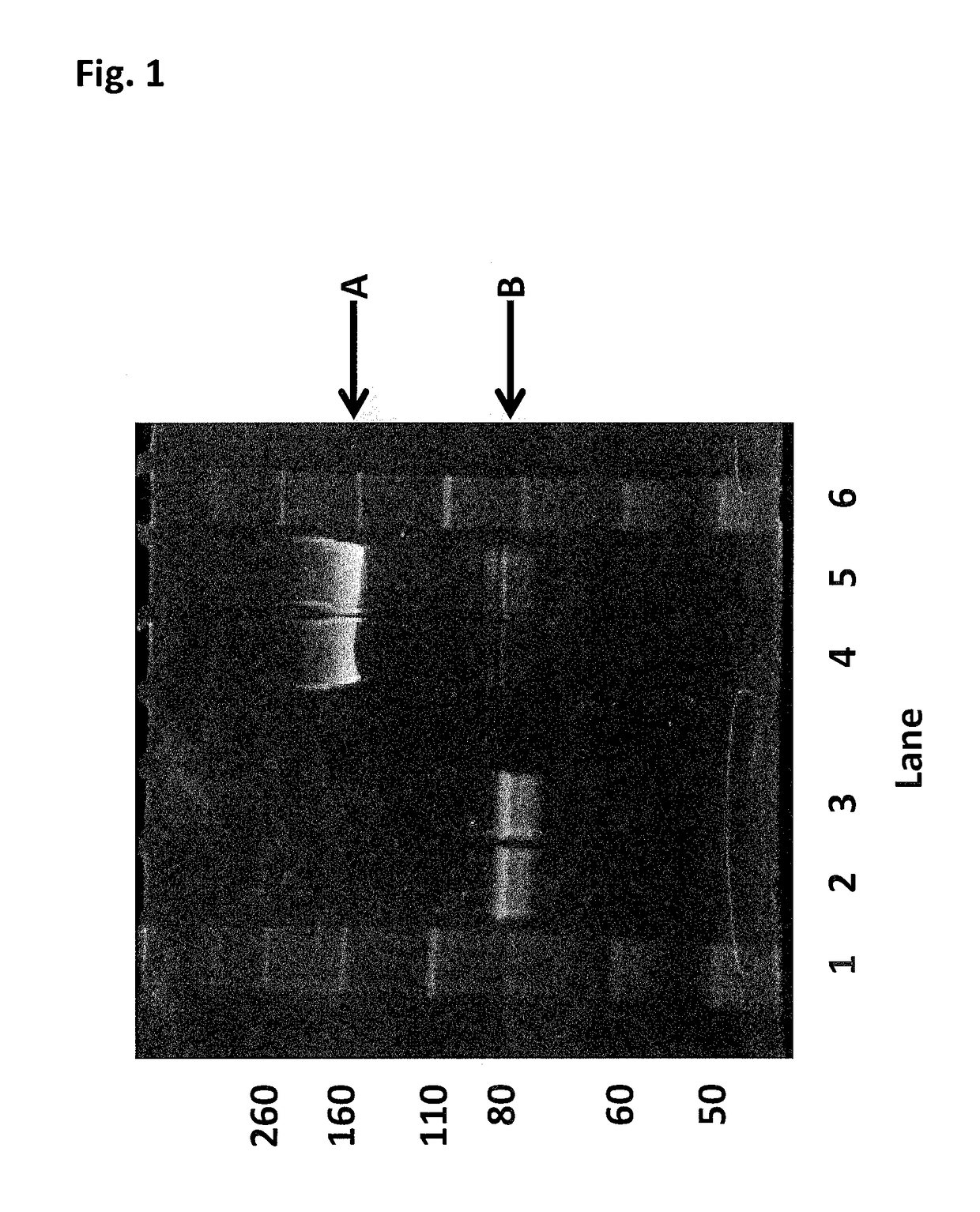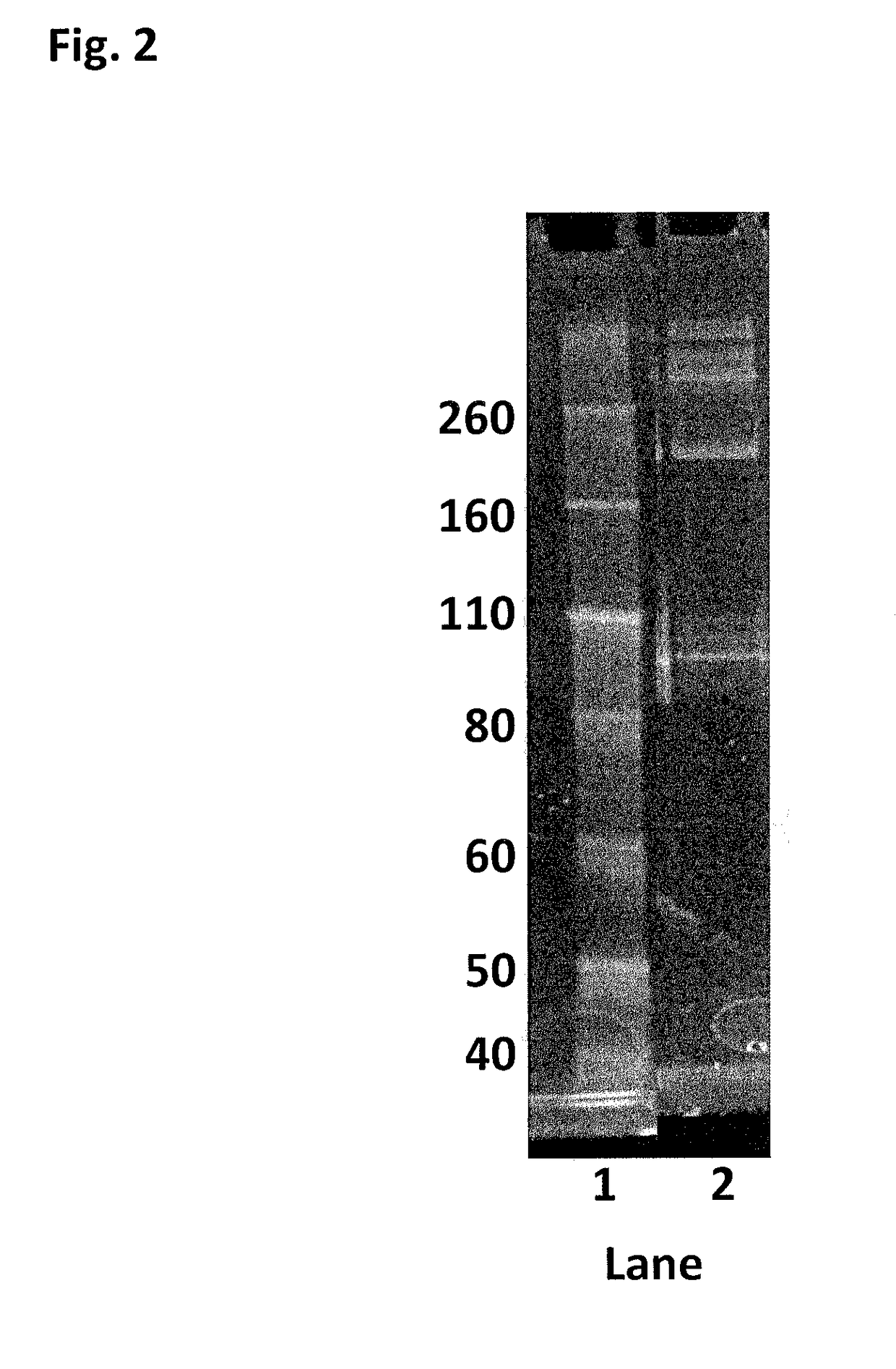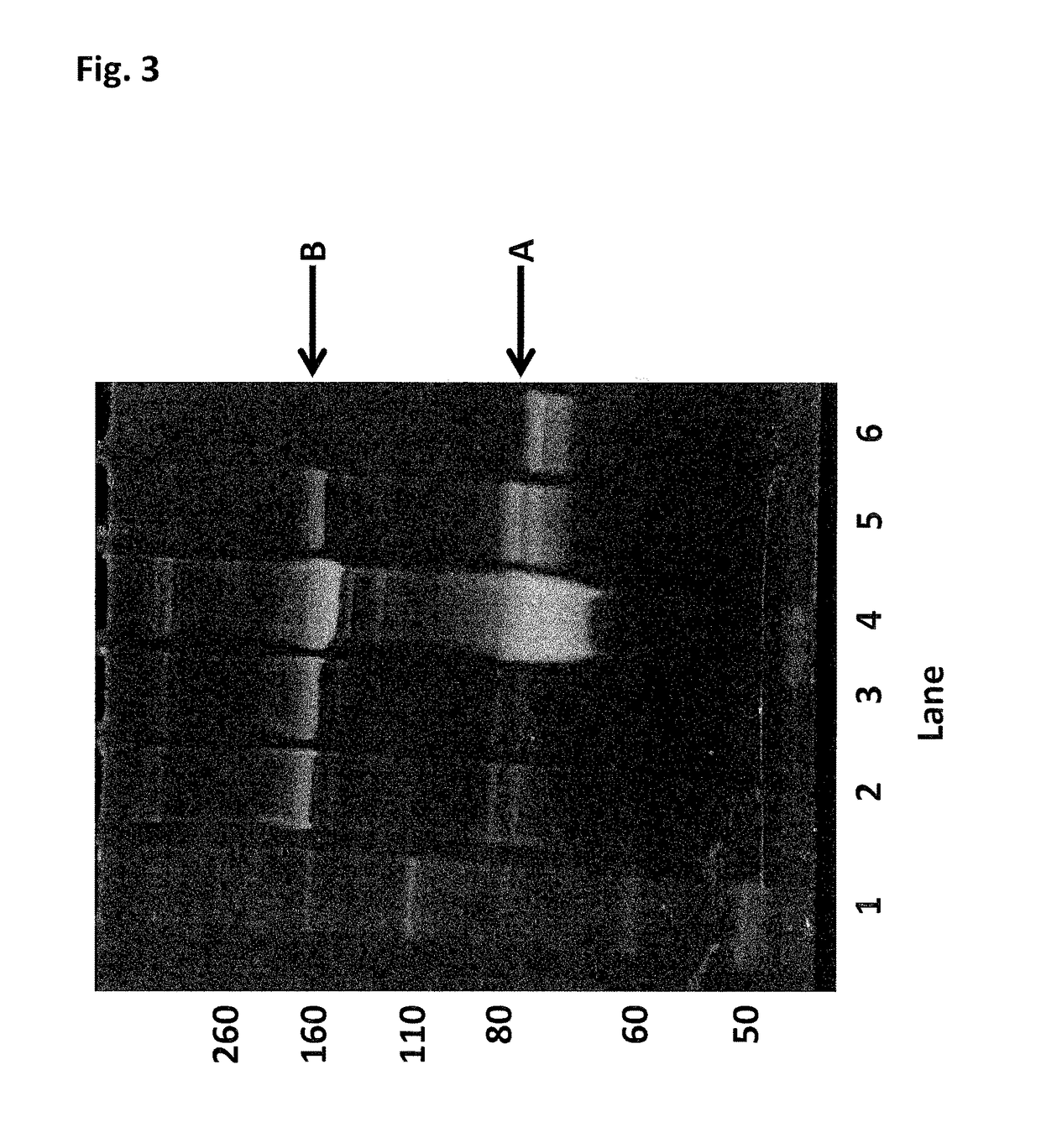Enzyme construct
a technology of enzymes and constructs, applied in the field of enzyme constructs, can solve the problems of slowness and high cost of existing technologies, and achieve the effect of improving the ability to control effective control of the movement of polynucleotides
- Summary
- Abstract
- Description
- Claims
- Application Information
AI Technical Summary
Benefits of technology
Problems solved by technology
Method used
Image
Examples
example 1
[0437]In this Example and all of the following Examples, bismaleimide-functionalized PEG linkers are identified with reference to their molecular weight. For instance, “2 kDa”, “2 kDA linker” or “2 kDA PEG linker” refers to a bismaleimide-functionalized PEG linker having a molecular weight of 2 kDa.
[0438]This Example describes the method of synthesising the Hel308 Mbu(R687A / A700C)-2 kDa dimer (where each monomer unit comprises SEQ ID NO: 10 with the mutations R687A / A700C, with one monomer unit being linked to the other via position 700 of each monomer unit using a 2 kDa PEG linker) and the Hel308 Mbu(R681A / R687A / A700C)-2 kDa dimer (where each monomer unit comprises SEQ ID NO: 10 with the mutations R681A / R687A / A700C, with one monomer unit being linked to the other via position 700 of each monomer unit using a 2 kDa PEG linker). In the case of these dimers the A700C is the added mutation that serves as the connection for the linker in the dimer proteins (Mbu / R687A A700C-2 kDa PEG link...
example 2
[0441]This Example describes the method of synthesising the Hel308 Mhu multimer (multiple units of SEQ ID NO: 19). There are no added mutations on Hel308Mhu (SEQ ID NO: 19), so the cysteines contained in the WT are used as the sites for linkage.
[0442]DTT was added to Hel308 Mhu (1.83 mg / mL) (SEQ ID NO: 19) to 10 mM and placed on a rotator for 30 min. The reduced protein was buffer exchanged into 100 mM potassium phosphate, 500 mM NaCl, 5 mM EDTA, 0.1% tween20, pH7.2. 30mer ssDNA (SEQ ID NO: 68) was added to the helicase (6 fold excess) to protect the internal cysteines and increase the likelihood of the protein remaining stable. The protein / DNA solution was diluted to 1.6 mg / mL with buffer, placed under an atmosphere of nitrogen and incubated at room temperature for 30 min. 0.0095 mM bismaleimide-PEG (2 kDa) was added and the reaction allowed to proceed at room temperature under an atmosphere of nitrogen for 2 h. 10 mM DTT was added to quench the reaction and break up any disulfide ...
example 3
[0444]This Example describes the method of synthesising the Hel308 Tga(R657A / N674C)-2 kDa dimer (where each monomer unit comprises SEQ ID NO: 16 with the mutations R657A / N674C, with one monomer unit being linked to the other via position 674 of each monomer unit using a 2 kDa PEG linker). In the case of this dimer the N674C is the added mutation that serves as the connection for the linker in the dimer protein (Tga N674C-2 kDa PEG linker-N674C Tga).
[0445]DTT was added Hel308 Tga(R657A / N674C) (2 mg / mL) (where each monomer unit comprises SEQ ID NO: 16 with the mutations R657A / N674C, with one monomer unit being linked to the other via position 674 of each monomer unit using a 2 kDa PEG linker) to 10 mM and placed on a rotator for 30 min. The reduced protein was buffer exchanged into 100 mM potassium phosphate, 500 mM NaCl, 5 mM EDTA, 0.1% tween20, pH7.2. 30mer ssDNA (SEQ ID NO: 68) was added to the helicase to increase the likelihood of the protein remaining stable. The protein / DNA sol...
PUM
| Property | Measurement | Unit |
|---|---|---|
| current | aaaaa | aaaaa |
| current | aaaaa | aaaaa |
| pH | aaaaa | aaaaa |
Abstract
Description
Claims
Application Information
 Login to View More
Login to View More - R&D
- Intellectual Property
- Life Sciences
- Materials
- Tech Scout
- Unparalleled Data Quality
- Higher Quality Content
- 60% Fewer Hallucinations
Browse by: Latest US Patents, China's latest patents, Technical Efficacy Thesaurus, Application Domain, Technology Topic, Popular Technical Reports.
© 2025 PatSnap. All rights reserved.Legal|Privacy policy|Modern Slavery Act Transparency Statement|Sitemap|About US| Contact US: help@patsnap.com



